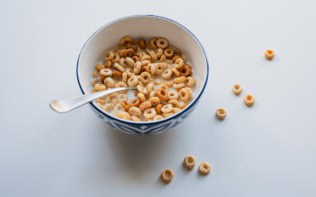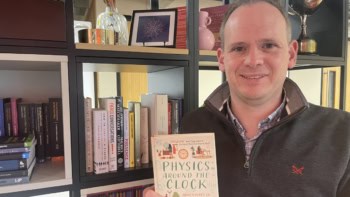By Margaret Harris
One quirk of working for Physics World is that most staff members are assigned a British newspaper to skim each day in search of science news. The exact rationale determining which of us gets what paper is not entirely clear, but for whatever reason, I have ended up with that venerable mouthpiece of British conservatism, the Daily Telegraph.
As a result of this arrangement, I have become a connoisseur (if that’s not too flippant a word) of the Telegraph‘s obituaries page. My favourites are the obituaries of eccentric aristocrats straight out of P G Wodehouse, but the Telegraph‘s writers also have a nice line in honouring little-known heroes of World War II – and every now and then, I come across an obituary with a connection to physics.
Take yesterday’s entry on Sydney Wignall, an adventurer and marine archaeologist who died on 6 April at the age of 89. Wignall was best known for leading a 1955 expedition to the Tibetan Himalayas that ended with his capture and torture by Chinese troops, who suspected him (accurately, as it turned out) of being a spy. Later in life, however, he was instrumental in excavating two wrecked ships from the ill-fated Spanish Armada. In the course of this project, Wignall discovered that an inadequate understanding of materials science probably contributed to the Armada’s defeat.
To understand how, you first need to appreciate that when the Armada sailed in 1588, marine gunnery was still in its infancy. In fact, a proper science of ballistics would not appear until 150 years later, when a British military engineer, Benjamin Robins, began a systematic study of cannon-ball trajectories using Newtonian mechanics. To make matters worse, the stone, lead and iron shot available to 16th century gunners were anything but uniform. This non-uniformity meant that a cannon loaded in the same way, with the same amount of gunpowder (another notoriously non-uniform quantity), by the same people, elevated to the same angle and fired at the same point in the ship’s rolling motion would almost certainly not deliver its deadly package to the same place.
Wignall’s contribution was to show that Spanish gunners faced an extra difficulty. By performing X-ray analyses on shot brought up from wrecks on the sea floor, Wignall’s team was able to demonstrate that Spanish craftsmen had routinely poured cold water into the moulds after the shot was cast. This sped up the manufacturing process, but it also caused the outer layers of the shot to contract and become brittle. In addition, the archaeologists found that some of the Spanish 7-inch-diameter iron shot was partly composed of recycled 3-inch shot. These smaller metal spheres would melt only imperfectly during casting, which meant that the final product had a very non-uniform density and was unstable in flight.
It is probably for historians, not physicists or materials scientists, to determine how much this poorly made Spanish shot contributed to the Armada’s defeat. But it is pretty clear that it would have been, as a minimum, a source of immense frustration for the Spanish gun crews, who repeatedly watched their perfectly aimed shots veer away from their targets for no apparent reason – all for the want of better metallurgy.



